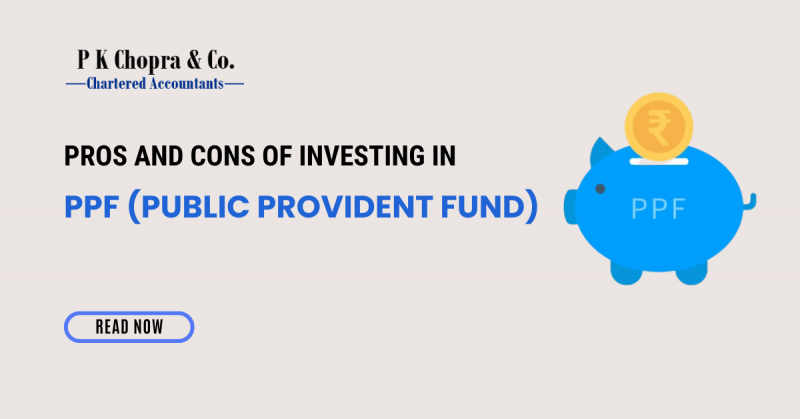Pros and Cons of Investing in PPF (Public Provident Fund)
Pros and Cons of Investing in PPF (Public Provident Fund)
When it comes to financial planning, finding the right investment avenues is a crucial decision. The Public Provident Fund (PPF) stands as one of the most popular and government-backed options in India. Offering a mix of stability and returns, the PPF scheme has its share of advantages and disadvantages. Let’s take a closer look at what investing in PPF entails.
Advantages of Investing in PPF:
- Tax Benefits: One of the most appealing aspects of PPF is its tax benefits. Contributions made to PPF accounts are eligible for deductions under Section 80C of the Income Tax Act, up to a maximum limit. Additionally, the interest earned and the final amount withdrawn are both tax-free.
- Fixed Interest Rate: PPF comes with a fixed interest rate, which is set by the government every quarter. This provides a sense of stability and predictability, which can be comforting for risk-averse investors.
- Long-Term Nature: PPF has a lock-in period of 15 years, making it a suitable option for long-term financial goals. This also encourages disciplined savings and helps individuals accumulate a substantial corpus over time.
- Government Backing: PPF is backed by the government, which instills a sense of security in investors. The government’s involvement ensures that the investment is safe and unlikely to default.
- Partial Withdrawals and Loans: While PPF has a 15-year lock-in period, investors can make partial withdrawals from the 7th year onwards. This feature can come in handy during emergencies. Additionally, loans can be availed against PPF balances after the 3rd year.
Disadvantages of Investing in PPF:
- Lower Liquidity: Despite the option of partial withdrawals, PPF doesn’t offer the same level of liquidity as some other investment avenues. The 15-year lock-in period might not suit those who require more accessible funds.
- Fixed Interest Rate: While the fixed interest rate is an advantage for stability, it can also be a disadvantage when market interest rates are higher. In such scenarios, other investment options might offer better returns.
- Annual Contribution Requirement: PPF mandates a minimum annual contribution to keep the account active. Failing to contribute the minimum amount can lead to the account becoming inactive, and reactivating it requires paying a penalty.
- Limited Access for NRIs: Non-Resident Indians (NRIs) are not allowed to open new PPF accounts. If an individual becomes an NRI during the PPF tenure, they can’t extend the account beyond the original maturity period.
- Market-Linked Returns Absent: PPF offers a fixed interest rate, which means investors won’t benefit from potential market-linked returns that other investment options might provide.
Conclusion:
Investing in PPF can be a prudent choice for individuals seeking a safe and disciplined long-term savings option. Its tax benefits, government backing, and fixed interest rate make it an attractive avenue for wealth accumulation. However, the lock-in period and limited liquidity might not align with the immediate financial needs of some investors. As with any investment decision, understanding your financial goals, risk tolerance, and liquidity requirements is crucial. Exploring a mix of investment options can help you strike a balance between stability and potential returns to meet your financial aspirations.
Pros and Cons of Investing in PPF (Public Provident Fund)

